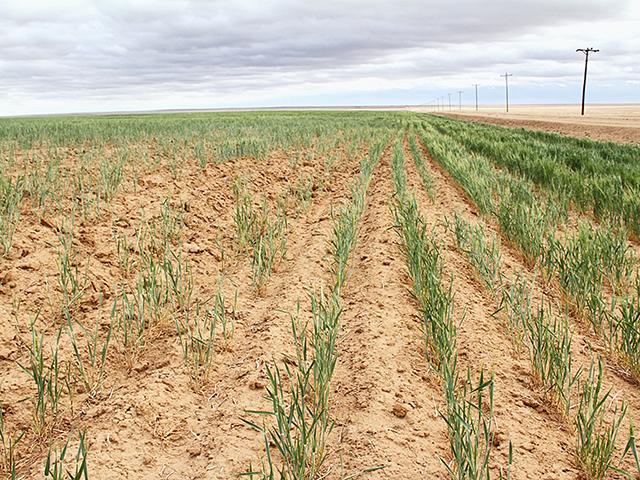Weatherlink
The Long Tail of Drought
As we move through this first quarter of 2022, the echoes of a prominent large-scale weather feature from the past 12 months continue to chime through the crop- and food-supply arenas.
The year 2021 featured a definite sharp discrepancy in precipitation. Much of the eastern and southeastern half of the contiguous U.S. had normal to above-normal amounts. In contrast, the western and northwestern half of the contiguous U.S. had a dry and hot year. For the Northern Plains, that meant a full year of drought, going back to autumn of 2020 for the start of excruciating dryness. Drought, of course, also covered the entire western U.S. and the Canadian Prairies.
Details of the Northern Plains drought in 2021 are worth closer attention. The Drought Severity and Coverage Index (DSCI), which summarizes conditions indicated in the U.S. Drought Monitor, totaled a record high value of 393 in North Dakota on May 18.
In addition, 100% of the land in North Dakota was in drought for 16 consecutive weeks, from March 9 through Aug. 24. This level of drought coverage and intensity is similar to historic droughts in 1936 and 1988. Wheat production showed a dramatic drop, as well. In the U.S., USDA estimates the total 2021 wheat harvest at 1.646 billion bushels, the smallest in 19 years. Canada saw a 40% reduction in its wheat harvest.
P[L1] D[0x0] M[300x250] OOP[F] ADUNIT[] T[]
The impact of the widespread drought is still reverberating in this new year. A report from U.S. Wheat Associates notes the ratio of wheat supplies to total wheat disappearance at the end of the 2021-22 marketing year may decline to 12.5%, the lowest in more than two decades.
The wheat crop's welfare is, of course, important because so much wheat goes directly into the human food supply. And, one of the most recognized wheat varieties, durum, took an especially hard hit from the 2021 drought. The durum harvest was only about half the previous year in both the U.S. and Canada because of the drought.
And, as is widely known, durum is the basis for all forms of pastas -- spaghetti, lasagna, rigatoni, mostaccioli -- the list goes on. The qualities in durum that make it so good for pasta are not duplicated in other wheat classes. Thus, pasta supplies may be down and prices higher during the first half of this year because of the 2021 drought.
Wheat harvested in Australia and Argentina may help with some of the world supply situation. However, to a large extent, the world needs the Northern Hemisphere wheat crop to perform well later this year; and, drought potential will be not only closely watched but also plugged into trading strategies and calculations as the long tail of the 2021 drought continues on its course.
**
-- Read Bryce's weather blog at about.dtnpf.com/weather
-- You may email Bryce at bryce.anderson@dtn.com
[PF_0122]
(c) Copyright 2022 DTN, LLC. All rights reserved.




